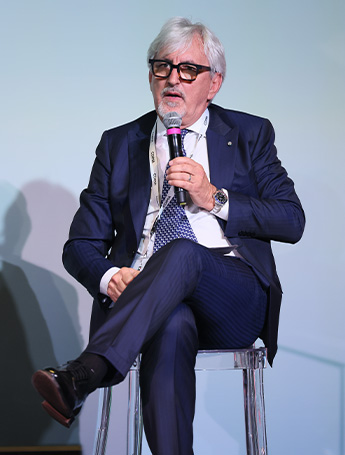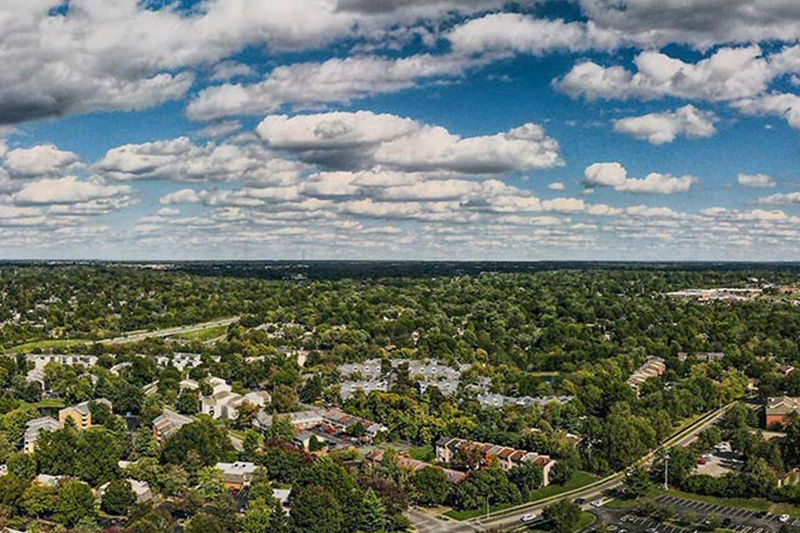
Watch again Alberto Oliveti’s speech at COIMA Real Estate Forum XII
“We live in an era of great energy, social, environmental, and digital transitions. It is time to ask ourselves how we can manage these transitions to reduce world inequalities, including in urban regeneration.”
During this year’s COIMA Real Estate Forum, “The Capital Perspective” round table attracted great interest. The event was dedicated to the role that investments, foundations and private pension funds can play in an urban regeneration process and for the development of the cities of the future.

Alberto Oliveti, President of Fondazione ENPAM - Ente
Nazionale di Previdenza e Assistenza Medici and AdEPP
Fondazione ENPAM - Ente Nazionale di Previdenza e Assistenza Medici (National Medical Welfare Institution) and AdEPP - Associazione degli Enti Previdenziali Privati (Association of Private Social Security Institutions) President Alberto Oliveti provided an interesting view, underlining the importance of a transversal and integrated approach to urban regeneration where health, environment and urban development must be recognised as mutually influencing interconnected elements.
Read also: Social bridges for inclusive cities
However, Fondazione ENPAM is working in a country where “these challenges seem to be increasingly difficult. It seems that Italian society increasingly resembles a dry plant - it has a few shoots, thin stem, fragile branches and many leaves that are about to fall” Oliveti said.
The President said that this “uninspiring, but incontrovertible” description must encourage the engagement of private pension foundations in urban planning and real estate activities. This includes ENPAM, its underlying work and urban regeneration. “If this is the situation, something must be done by adopting a holistic approach, to impact all aspects of everyday life. Urban regeneration is the transversal, innovative, and revolutionary dimension we need. It affects all areas including construction, land and resource use, energy transition, circular economy and digital approach.”
These are the areas in which the contemporary challenges are being played out, but they are not the foundations’ core activities, “and are outside the concept of health and welfare of which ENPAM is a part.” The foundation’s purpose is to collect health contributions and invest them with foresight, to finance the benefits made available to its members - healthcare, pensions and support for work.
“What does the mission of a social security institution without philanthropic schemes have to do with urban regeneration?” Oliveti asked. “The point revolves around the concept of health protection. Protecting health does not mean producing services, but being at the service of others, in a relationship where the best possible health level is provided. A description that sums up the idea of Health, with a capital H.”
This means working to make members’ lives better. “The Foundation manages health contributions, and acts in a responsible and far-sighted manner for the collective well-being. We can see urban regeneration as a means, to improve health and life quality. This applies not only to doctors and dentists, but everyone.”
Read also: Urban parks: a balance between inclusion, development, and wellbeing
Contributing to urban regeneration means creating conditions for people to get the most out of their social security fund membership. “Designing the cities of the future is not an isolated process or limited to specific geographical areas. It must be a widespread and integrated method, involving all sectors. We believe we must go beyond simple investment diversification.” Rather, it is a matter of recognising the evident return of urban regeneration as a community service. “Regeneration must be spread out without neighbourhood, city or regional social barriers. It must be seen as a widespread and integrated movement, encompassing urban and rural areas, to address global challenges effectively and directly.”
Read also: Investing in the welfare of communities
Alberto Oliveti’s reasoning has only one possible consequence: “if the professionals we serve have a public mandate and ENPAM has a public function, our investments must have a public impact. To make this link stronger, in 2021, when Covid was decreasing, I wanted to give a clear direction to the Foundation – who else, if not doctors, should adopt the One Health approach? One Health for people, living animal or plant and the environment that unites them.”
This is the reason why ENPAM invests in urban regeneration projects, influencing their educational and public awareness vision. “ENPAM’s participation in the COIMA ESG City Impact Fund is a practical example. The significant investment in the fund shows the institution’s trust in the potential of urban regeneration and reflects its commitment to combining individual and community interests. “In this way we can build more resilient cities and healthier communities and chart a course towards a sustainable and inclusive future.




